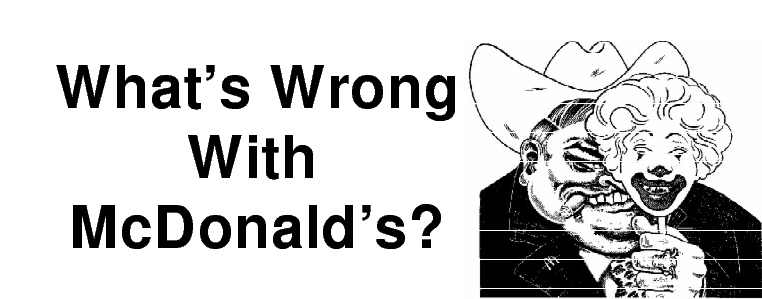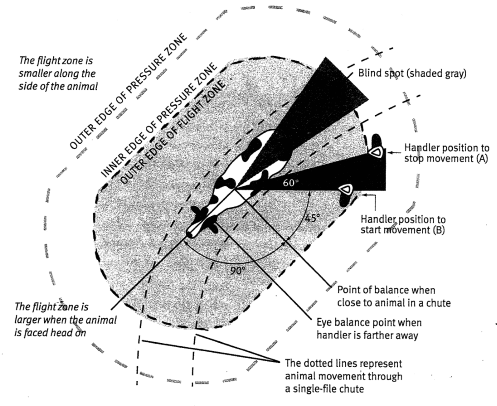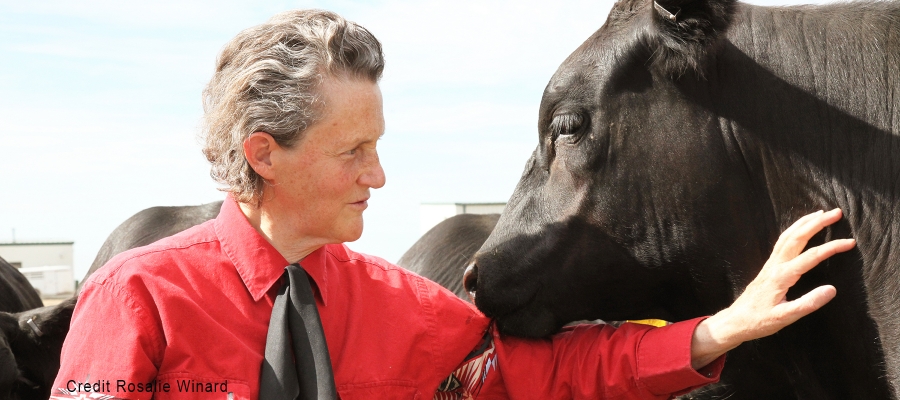For this incredible true story, we spoke to one of Time’s 100 most influential people in the Heroes category for 2010. Her name is Temple Grandin and she is our hero. This is the story of a slaughterhouse revolution. It starts with what is called the "McLibel Case".
In 1991, McDonald’s sued a postman named Dave Morris and a gardener named Helen Steel for defamation. The cause of the lawsuit was a pamphlet titled “What’s Wrong With McDonald’s”, which was distributed by London Greenpeace in 1986. Here’s a sample from the pamphlet “The menus of the burger chains are based on the torture and murder of millions of animals. Most are intensively farmed, with no access to fresh air and sunshine, and no freedom of movement. Their deaths are barbaric - 'humane slaughter' is a myth". London Greenpeace only printed a few thousand copies of the pamphlet. It was only mass distributed when it was reprinted by a group called “Veggies”.

When McDonald’s learned about the pamphlet in 1987, they warned Veggies with a defamation lawsuit, but agreed to back down after Veggies changed some of the wording in the pamphlet. However, McDonald’s dealt with London Greenpeace in a very different way. McDonald’s did not approach London Greenpeace with a warning of a lawsuit. Instead, they hired private investigation firms and sent spies to infiltrate the group from 1989 to 1991. Because London Greenpeace was unincorporated, McDonald’s had to sue individuals, so they needed to find out the names of people to sue. While the defendants lost the legal battle, the court case was a public relations nightmare for McDonald’s. This great embarrassment pushed McDonald’s to create huge changes in the meat industry. In 1999, McDonald's hired Temple Grandin to audit their meat providers. McDonald's adopted Dr. Temple Grandin's scoring system - the worldwide gold standard for the humane treatment of meat industry animals. Before Temple Grandin, things were very bad in the slaughterhouse industry.
Dr. Grandin developed a scoring method that was objective - for example, noting if a cattle falls down or not - there's no room for interpretation here.
"Those are all outcome based measures. It's sort of like traffic rules - if you were going to just enforce 3 traffic rules - what would be the 3 most important traffic rules to enforce for public safety? Well they would be speeding, stop sign violations, and drunk driving. If you enforce those 3 things you'd probably get 90% of the safety. You know stop sign left turns, that's a lot less important."
- Dr. Grandin
Temple has led an extraordinary and heroic life. It was against all odds that she has managed to create worldwide change and improve the living and dying conditions of countless animals. In 2010, HBO released a film about Dr. Grandin’s life. The film was "Temple Grandin," starring Claire Danes as Temple. You have to watch it - it's one of my favorite movies. We spoke to the incredible screenwriter, Christopher Monger, and he really blew our minds when he explained how they really didn't fabricate anything - Temple really did eat Jell-O for most of her meals and people really did put bull testicles on her truck!
How has Dr. Grandin been able to bring the world so many insights about slaughterhouses? Well, she observes slaughterplants from the eye level of the cattle. She noticed there were many things that seem innocuous to us, that we would never notice, that would make cattle stop walking. Things that cause little movements that cattle might notice out of the corner of their eye would be of concern, because they are prey animals and they need to be watchful. Little things like a paper towel hanging down or a reflection on a mud puddle.
Humans categorize things into what we have labels for. Language allows us to generalize things by pooling them into categories. But animals like cattle can be very specific. For example, if a cow has only ever been handled by people riding horses, they may be frightened of people walking on the ground, because those are 2 different things! It is important to understand what frightens or calms cattle in order to handle them. Rather than ineffectively yelling at cattle or using electrical prods to get them to move, there are simple principles that we can learn from Temple Grandin.

A flight zone is a cow’s personal bubble. If a cow hasn’t been around many people, then people are strangers to them and so their personal bubble will be much larger around people. We all have personal bubbles and it works in the same way. If I’m comfortable with you, my bubble will be smaller and you can come closer without getting to the point of making me uncomfortable. Getting a cow to move is very simple. When a handler walks inside the flight zone past the shoulder of a cow, the cow will walk in the opposite direction that the handler is walking. The cow’s shoulder is generally considered the point of balance. If you walk past it one way, the cow moves the opposite way. Oh, by the way, the size of the flight zone and the position of the point of balance can change, depending on how you handle the cow, but we won’t get into that.
All of Temple’s slaughterplant designs are based on principles of animal behavior. There are 3 main features to Temple's slaughterhouse design:
1. The paths are curved - cattle like to feel like they're going back to where they came from, because they know that it's probably safer there than somewhere new - and curves make them feel like they're returning to where they came from.
2. The fences are solid - cattle can't imagine danger, so if your fences are solid (ie. not see-through) then they can't see frightening things like unfamiliar movements.
3. The floors are non-slip - cattle are a prey species...they need to be able to run away if necessary, and slippery floors can lead to slipping and falling, which makes them very anxious.
So what is the state of slaughterhouses today? Well, most of the large slaughterplants today follow the animal welfare guidelines created by Temple Grandin. By using her principles, cattle can be guided through slaughterplants with much less use of force. Thanks to surveillance cameras, audits and stricter rules, we see a lot less of the atrocities that existed before Temple Grandin led the many changes in the meat industry. These atrocities include poking out animals’ eyes to restrain them, breaking their tails to make them move, or prodding at their sensitive areas, like their genitals to get them to move, hanging conscious animals upside down to restrain them, driving animals over other fallen animals, and the list goes on.
We should note that the smaller and mid-sized slaughterplants are where many problems still exist, such as poorly maintained equipment - for example captive bolt stunners. Captive bolt stunners are used on cattle to irreversibly damage the brain and are meant to render cattle permanently unconscious. If these guns aren’t taken apart and cleaned before each shift, there can be ineffective shots and cattle might regain consciousness.
If you want to avoid buying meat that may have undergone unethical practices, then avoid buying budget-priced meats, or buying meat from discount stores.

